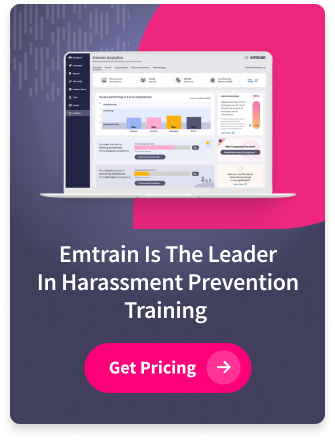Validation Is a Wellness Skill—and a Leadership Skill
When people think of employee wellness, they often imagine gym stipends, meditation apps, employee assistance programs, or maybe a juice bar in the office. Yet wellness is very much a leadership responsibility. This is because leaders have a lot of influence over an employee’s mental health.
Just think of the worst boss you ever had – chances are that you don’t fault them for poor technical or operational skills. You fault them for the grinding rumination, emotional labor, and psychological hardship you endured between 3:00 and 5:00 a.m., which is the opposite of mental health and wellness.
Employee mental health is something that happens day-to-day, interaction by interaction. It starts with having positive and reliable relationships with bosses who demonstrate empathy and build trust. The great news is that building trust is a skill, and we can teach you how. Bosses can demonstrate empathy and build trust by using validation.
What Is Validation?
Validation is acknowledging, normalizing, and relating to employees’ range of feelings, especially the negative ones. Here are four simple, but admittedly, not always easy, steps to validating someone:
1. Listen Without Interrupting
When someone shares how they’re feeling, stop yourself from interrupting or dismissing them. Put away your phone or other distractions. Look at them as they talk to you.
2. Reflect Their Perspective
Pay attention to the details enough to form a logical story about how they are feeling. Try to take on their point of view. Let them know that what they are feeling is normal. You can do this by playing their story back to them – again, from THEIR point of view. Framing their emotions with logic helps them stabilize strong negative emotions–they will feel “seen”, as if they can be their authentic self with you, you “get” them, and that they don’t have to pretend that everything is ok. You can use inclusive phrases like: “A lot of people would feel this way in your shoes.” That said, only validate the valid–don’t pretend that something highly irregular is logical or normal.
3. Show Empathy, Not Anger
Disclose supportive emotions. Tell them you empathize with them and why. When people share strong emotions, they expect an emotional response. Emotional reciprocity helps to maintain a balance. Keep in mine–do not reciprocate anger, rage, or hostility. This could reinforce hate and create destructive consequences.
4. Take Action Together
If the employee doesn’t have the power or authority to take action, do it on their behalf–just make sure that it’s ok with them beforehand. If they’re ready, you can work through some next steps together. Otherwise, come back later and follow up.
If you find that you are upset by what you learned, walk away and circle back after you have had the chance to process your own negative emotions.
If you find yourself saying things like “It’s not so bad,” “You’ll be fine,” or “I see it differently,” then you are minimizing and invalidating them. In reality, life will go on, and there are always multiple perspectives in a situation. But getting to know the emotional depths helps a leader understand nuance and be more effective.
Validation isn’t approval, and it’s not agreement. It’s a receipt: “I hear you. I see where you’re coming from.” Even if you disagree, validating someone creates trust and brings you to solutions faster.
And if you want to level up your leadership, try validating someone you’re in conflict with. You might be surprised by how quickly the tension de-escalates.








